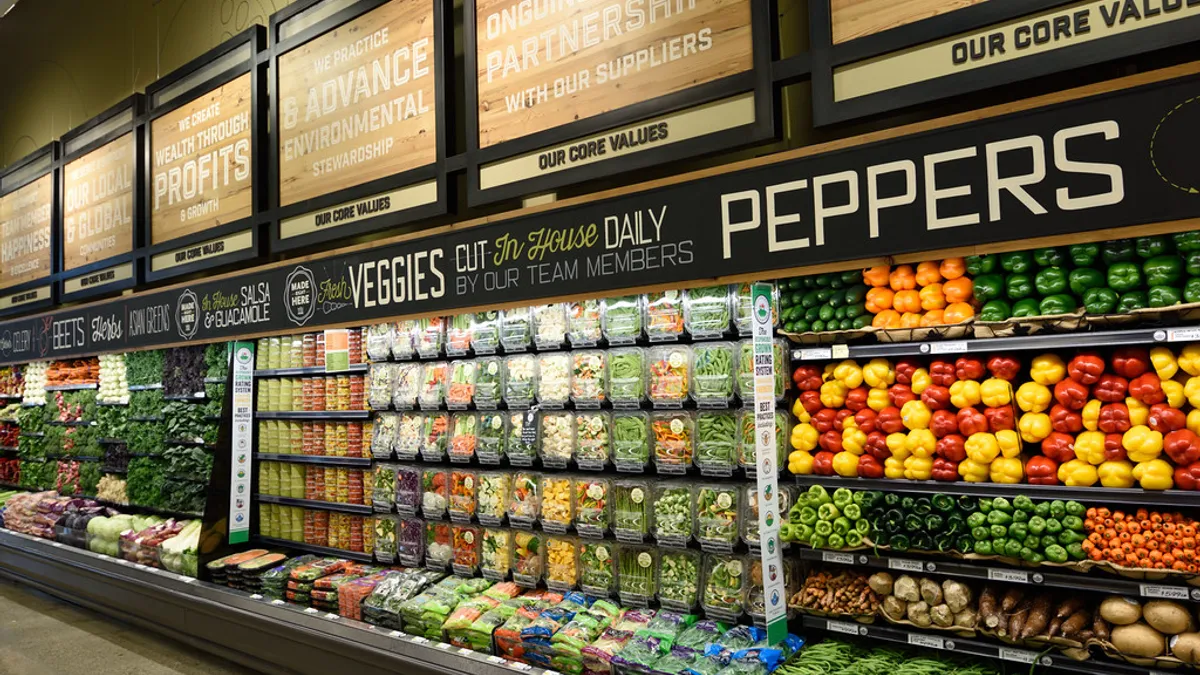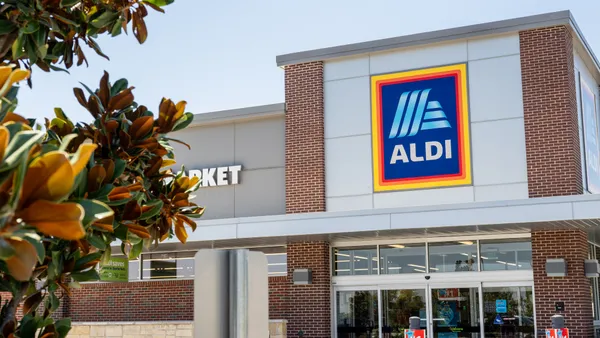Dive Brief:
- A significant percentage of the U.S. population is trying to lose weight, and online grocery shopping offers unique tools that can effectively reach these consumers and help them meet their goals, according to a study recently published in the journal Public Health Nutrition.
- Researchers from the University of Minnesota School of Public Health suggested three tools that could effectively reach these shoppers: A “healthy shopping” preference setting, a healthy meal planning tool, and a calculator that tallies up the nutritional quality of their shopping carts.
- These suggestions come as retailers are trying to figure out ways to better personalize the online shopping experience for customers.
Dive Insight:
As grocers look to improve their online shopping experiences, many are looking at ways to further personalize the digital journey.
To be more specific, they’re looking for ways to boost product discovery, and to hone the experience so that instead of combing through thousands of product listings — something that is nearly impossible to do on a screen, unlike in-store shopping — shoppers only view those products most relevant to them.
The recent study from the University of Minnesota team promotes the idea of personalizing shopping for a subset of consumers — in this case, those who are trying to lose weight.
This is a significant portion of the population, lead researcher Lisa Harnack said in an interview, noting surveys that show that around half of obese individuals in the U.S. are trying to lose weight. Many others, she noted, are simply looking to eat healthier than they currently do.
Through in-depth interviews with research subjects — 25 in all — Harnack found that a major frustration with in-store shopping is that it offers too many temptations for those looking to shed pounds, like aisles filled with treats and the aroma of fresh-baked goods. Online shopping, on the other hand, can be curated to only include items that incorporate claims, ratings and other attributes specified by shoppers.
Many retailers currently offer tabs like “gluten free” and “low sodium,” but Harnack’s research found that grocers can go further by allowing shoppers to set preferences or create individual profiles that would essentially customize the shopping experience and maximize product listings that fall in line with their health goals and minimize those items that don’t.
“The online platform can allow retailers to do things that are not feasible to do in the store, like creating this tailored shopping experience,” Harnack said.
The team also found subjects were enthusiastic about a menu-planning tool that suggests healthy meal ideas in line with their preferences, and a calculator tool that indicates the overall healthfulness of their order along with tips for improving, like buying lightly salted nuts instead of the regular kind.
After conducting the 25 initial interviews, Harnack and her team sat down to develop their list of hypothetical tools. They then ran those proposals by 25 new subjects to determine the top choices. All test subjects were individuals over the age of 18 who were actively looking to lose weight.
Although the study’s sample size seems relatively small, Harnack said this was all the team felt they needed to get a sense of the core challenges these consumers face.
“After around the 20th interview, we weren't getting a whole lot of new insights,” she said.
Grocers are used to offering shoppers as much choice as possible, so the idea of limiting those choices or lightly chiding people over purchase decisions may be a hard pill to swallow. But the very nature of digital shopping, which only allows consumers to scroll through one page at a time, seems to necessitate a pared-down experience. It’s also in grocers’ interest to help shoppers find new products they’ll like, since reordering products is an easy, ingrained habit for so many consumers.
Harnack said she hasn’t yet encountered a digital grocery experience that offers the depth of personalization her team outlined. She noted Shipt's new feature allowing shoppers to sort products according to dietary labels like low sodium, organic and vegetarian, and save their preferences under a profile.
Most online platforms already use machine learning to push product recommendations to consumers, and that technology promises to keep advancing in the years ahead. E-grocer Hungryroot requires new customers to fill out a questionnaire and then uses machine learning and predictive modeling technologies to build shopping carts in line with their health preferences. Halla, a “taste intelligence” startup that uses artificial intelligence and data drawn from a wide range of sources, including restaurant menus, to offer product recommendations, just raised $4.5 million.
Harnack said she'd like to replicate the study with a more diverse lineup of subjects, since most of those involved were white women who were well-educated. She also said her team is looking to partner with a grocer to further develop and test online health tools.
“We know that Americans have struggled to eat healthy during the pandemic and people put on some weight that they don't want to be putting on," she said. "So now, more than ever, people are interested in healthy eating.”










